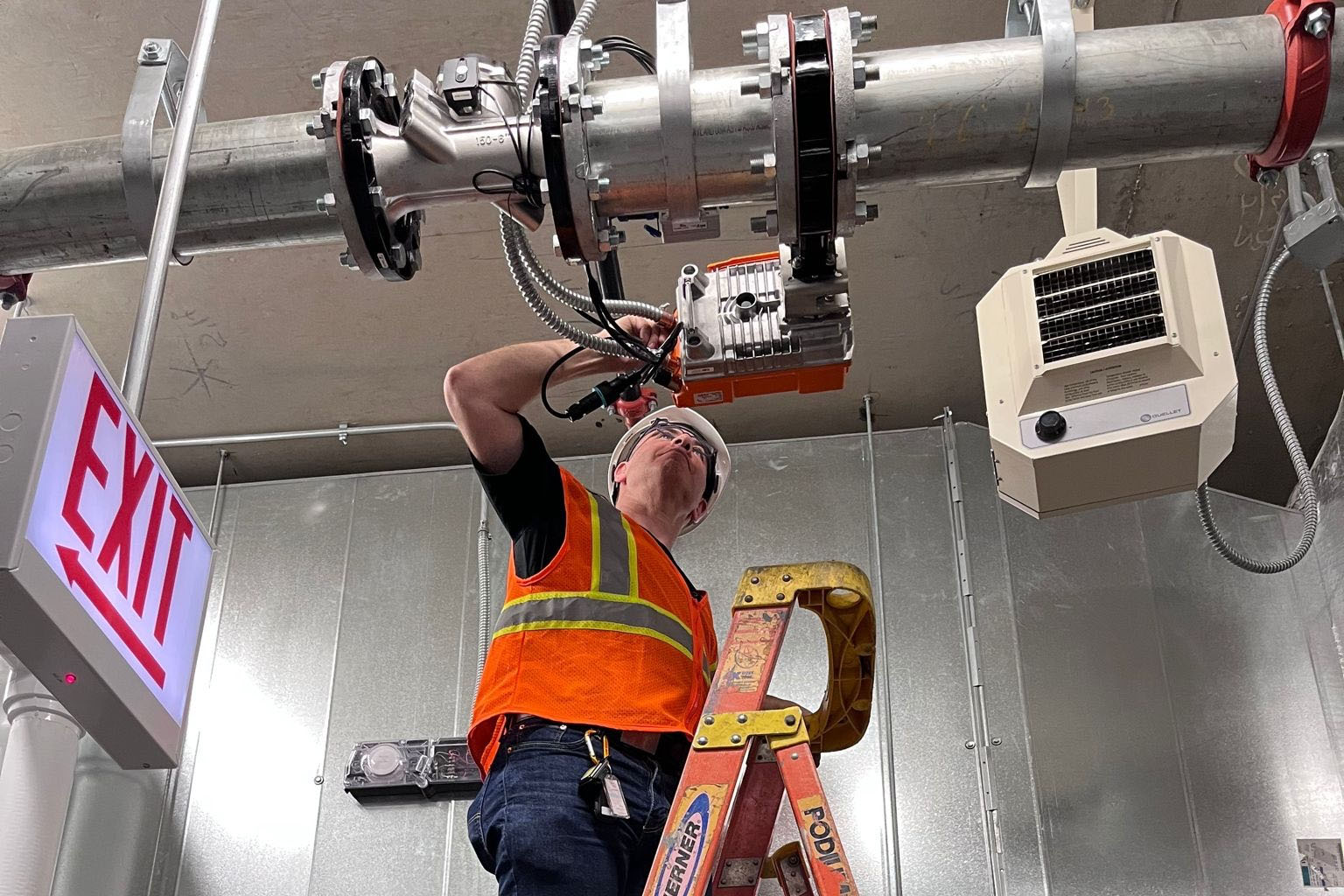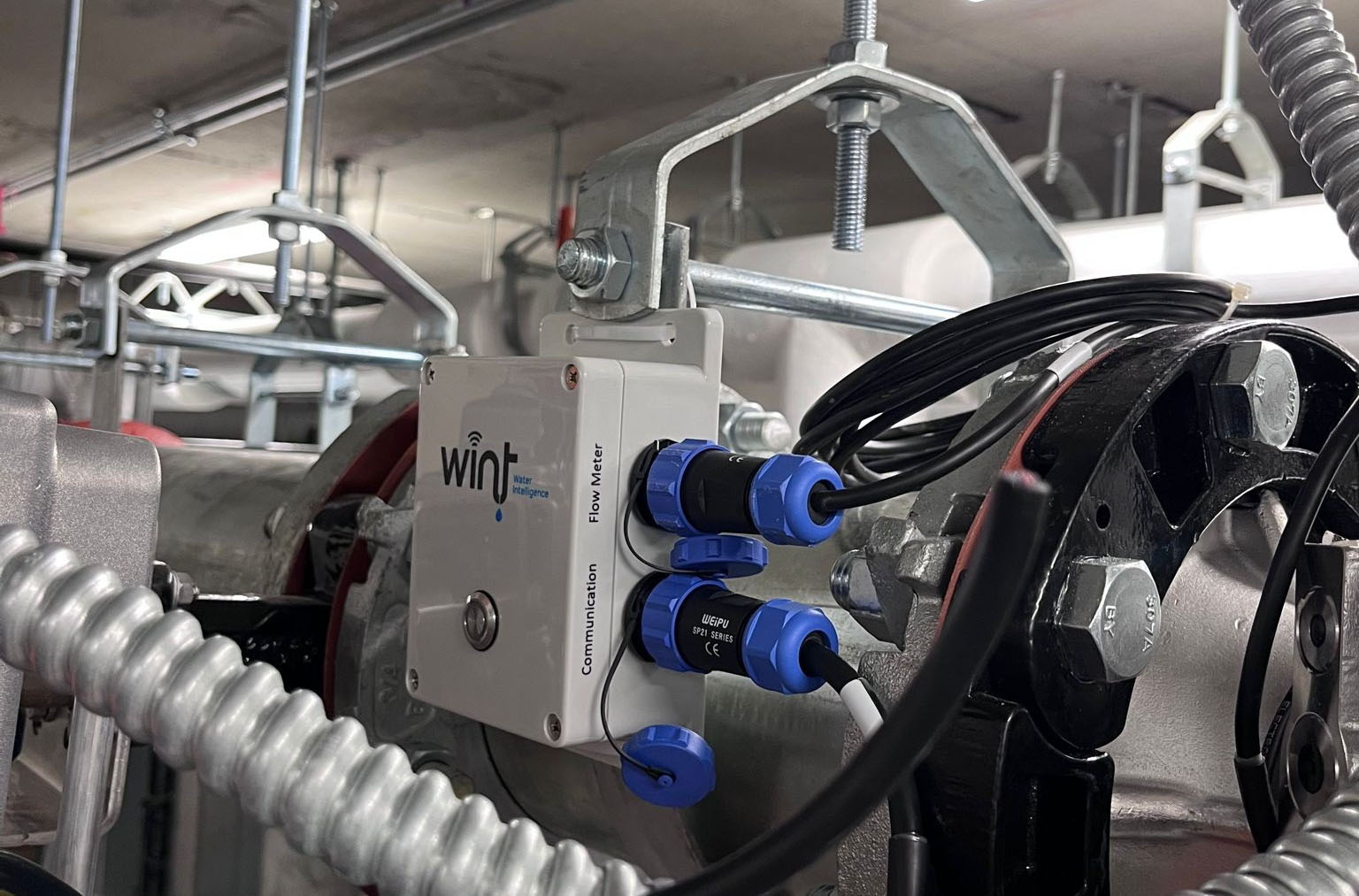Water Is the New Fire
Effective water management solutions are critical for an intelligent plumbing system.

Unlike typical monitored building systems such as HVAC and fire protection, plumbing systems are dynamic by design. Due to the inherent fluctuating demands of flow, temperature and pressure, they have historically lacked real-time management systems. This gap allows system creep to happen where, over time, plumbing systems operate beyond their optimal parameters without any feedback to the owners or operators, contributing to the common failure through pipe erosion or the impact of fluctuating pressure and hydraulic shock on equipment.
These failures lead to significant amounts of lost water, which, in the form of leaks and water damage, can cause project delays, require costly emergency remediation and repair services, add to customer inconvenience and dissatisfaction, and contribute to steeply rising insurance costs. In the end, the failure to properly manage water in buildings could set a construction project back months and cripple a tight budget of an operational building.
In addition, the lack of visibility on water usage in commercial buildings can be a significant obstacle to sustainability goals. Treating, delivering and heating the water supply requires an enormous energy output, accounting for 13% of total electricity consumption in the United States.
That level of energy usage results in an estimated 290 million metric tons of carbon emissions every year — approximately 5% of the total emissions produced in the United States and equal to the carbon output of 60 coal-fired power plants.
Plumbing industry standards still rely on antiquated benchmarks like the Hunter’s Curve and do not accurately capture modern water usage patterns.
Systems designed according to these outdated standards face challenges in properly maintaining today’s systems configuration and demands.
Plumbing engineers are responsible for foreseeing and designing systems that maintain their integrity and operational capability far beyond the construction phase and well into the operational phase of a building without significant system creep, ensuring that water systems are visible and operating within parameters for the lifespan of the building.
Indeed, plumbing engineers are on the front lines of this ongoing water management crisis. However, by applying new technology solutions, plumbing designers can help owners and operators dramatically improve efficiency and achieve immediately noticeable savings. In an increasingly competitive market, with ongoing labor shortages, rising material costs and an uncertain overall economic forecast, robust management of this critical resource can be a major competitive advantage.
By incorporating tech innovations into their projects, plumbing engineers can help clients save water, energy and money while establishing professional credibility and a reputation as trusted advisors. Empowering the industry to reach sustainability benchmarks by reducing carbon emissions allows clients to position themselves as leaders in this space. It encourages them to obtain sustainability certifications increasingly required for environmental, social and governance (ESG) target validation.

With new technologies powered by artificial intelligence and the Internet of Things, water loss and related risks can be addressed at the source. Real-time data-driven water management solutions transform companies to proactively optimize water use and mitigate waste and risk throughout the lifecycle of a building. Advanced leak detection and analytics solutions support the building’s complete lifecycle, from construction to operational phase.
Effective water management solutions should include capabilities such as:
High-accuracy detection of water abnormalities with minimum false alarms;
Automatically shutting off the water to isolate building systems and mitigate potential damages;
The ability to connect multiple systems across large buildings and facilities;
Backup power to ensure uninterrupted operation even during power outages;
Autonomous operation and local data storage in case of communication failures;
The ability to monitor and detect anomalies on all types of water systems in the facility, including main feeds, domestic cold water, irrigation, cooling towers, sprinklers and HVAC.
Minimizing the Empire State Building’s Environmental Footprint
A case in point is the Empire State Realty Trust (ESRT), an enterprise responsible for a large commercial real estate portfolio. The company installed these systems at the iconic Empire State Building in New York City in order to reduce water waste and carbon emissions while meeting operation and sustainability standards.
The company had two major goals for the structure:
1. To optimize water consumption and reduce the building’s overall environmental footprint, including water and its associated carbon footprint.
2. To detect and limit leaks before they can cause significant damage to the facility.
Because ESRT’s policy requires a positive return on investment (ROI) before implementing any new technology, these goals were specifically tied to concrete ROI requirements. To achieve its goals, the systems were deployed in multiple locations in the Empire State Building, including risers, cooling towers and other locations suggested by mechanical, electrical and plumbing engineers. Machine-learning algorithms monitor water flows in real time and alert staff when anomalies are detected.
Over the first 12-month period, ESRT:
Cut 7.5 million gallons of water waste;
Saved more than $100,000;
Reduced carbon emissions by more than 300 metric tons a year;
Prevented significant water damage.
During the same period, ESRT exceeded each of its target metrics by:
Providing early detection of multiple anomalies in various water-related equipment, including cooling towers and pumps;
Detecting and preventing significant water damage from a pump failure on a high floor;
Identifying previously invisible sources of waste.
ESRT significantly minimized the Empire State Building’s overall environmental footprint, combining water savings and reduced carbon emissions. It also eliminated a potentially damaging leak incident on a high floor. Finally, ESRT returned the investment within three months, significantly faster than the typical ROI for similar ESG and other infrastructure projects.
Insurance companies recognize the gravity of the situation. The recently coined phrase “water is the new fire” underscores the rising number of claims for water damage, which now outnumber fire-related claims. As insurers see the potential savings afforded by proactive water management, they are increasingly covering these systems and advocating for their mandatory inclusion in new developments.
To effectively tackle the challenges of water in commercial buildings, it’s essential to shed light on the various impacts we covered. Buildings consume a sizable portion of the public water supply, and with this comes a responsibility for sustainable management. Yet, without innovative approaches and the integration of real-time monitoring and control systems, the industry is navigating in the dark.

It’s high time we reimagine plumbing systems not as isolated networks but as integral, intelligent components of a building’s overall functionality. With water management and leak detection technology leading the charge, plumbing engineers can now design with foresight, creating systems that not only serve today’s requirements but anticipate the future’s demands.
Avishai Moscovich, MBA, PE, PEng., LEED AP, currently head of partnerships at WINT – Water Intelligence, is a seasoned professional with a rich plumbing engineering and water management background. He is known for his contributions to the ASPE Pipeline and the ASPE Plumbing Engineering Design Handbooks, as well as his active involvement in key industry committees such as the ASPE Main Design Standards and IAPMO Plumbing Standards Committee. His balanced blend of engineering knowledge and business acumen positions him as a prominent figure in advancing sustainable plumbing practices.




